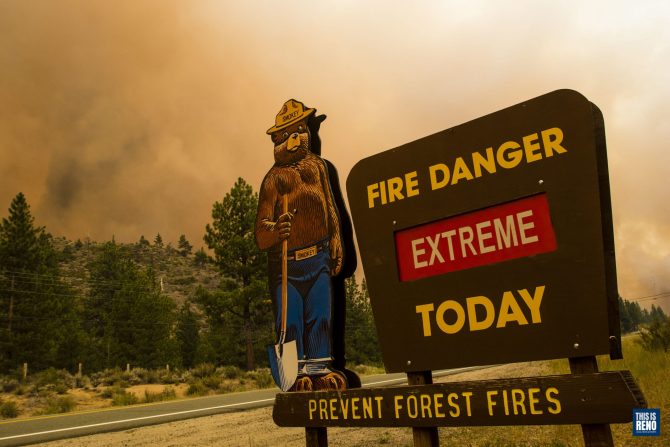"What the Indians here used to do, was, to burn out the brush every year in the woods, up the gorges keeping the oak and pine stands tall and clear..."
- Gary Snyder, "Control Burn" (line breaks omitted), 1971.
“The idea that we need to just let nature take its course really underestimates the management need, because these woods were actively managed for at least a thousand years and probably longer.” - Climate researcher Clarke Knight, 2020.

Native people and poets have been telling us of the ancient and global wisdom of prescribed burning for a very long time, but the lessons take hold slowly. Luckily, the excellent author M.R. O'Connor has just written a sweeping and completely engaging book on wildfire and controlled burns called Ignition. It is, necessarily, also a compelling story of the evolving definitions of terms like "nature" and "wilderness."
O'Connor is a writer with omnivorous curiosity, who in the course of researching her books and articles has traveled far and wide and found just the right papers to read and people to talk with. Her books range from resurrection science to navigation to fire, and she's written fascinating pieces on, for example, listening to trees, old sharks, Peter Matthiessen's The Snow Leopard, Haiti's misunderstood forest, and the five remaining large forests of the world. Says she, "I find it hard to pass up a story that is capable of subverting people’s assumptions.”
Her journey to lighting fires in the woods and prairies can be traced through several such stories, including her two previous books. Her first, Resurrection Science, is about what's often called de-extinction. That was followed by Wayfinding, a fascinating look at how we've moved across landscapes and seascapes around the world, whether using the stars or relying on GPS. Their subtitles hint at what was to come -- both "The future of wild things" and "How we navigate the world" lean into the changing cultures of fires.
She has said that the fire-adapted landscapes created by Australian Aborigines, seen when researching Wayfinding, helped set her on the path to Ignition. She mentions a book by Bill Gammage called The Biggest Estate on Earth, which I’ve since interlibrary-loaned. I highly recommend it if the rest of this appeals to you, or just for great lessons on how to read a landscape. (Not mentioned but imminently fascinating are the three kinds of Australian "firehawks" that drop burning sticks mid-flight, to spread wildfire and thus flush prey. Fire culture isn't only human.)
Ignition quickly drew me in because it begins not with the headline-making and record-breaking conflagrations of California or Maui, but with a modest fire on the prairie, in Nebraska's Sand Hills. Which made me smile because one of my early experiences with field burning also was in Nebraska. On a trip to see the sandhill crane migration, the car a group of us had traveled in set fire to the roadside grass when we stopped for a look at the Platte River. When we later recalled the benefits of prescribed burns on the prairie, we congratulated ourselves (it was put out quickly -- no harm done).
To do a better job than we did, O’Connor became a certified wildland firefighter, setting controlled burns and fighting uncontrolled fires, with supervisors and trained crews, from North Carolina to Nebraska, Arizona, and California several times over. As she describes her experiences we learn not only about fires and how and why to light them and fight them, but ecology, Native history, climate change, and the warped history of fire suppression -- featuring Smokey the Bear.
She also describes the several crews she works with, mixed groups that might include ranchers, inmates, Native elders, moms, military veterans, loggers, fresh faces, grizzled hotshots, and scholars of what noted fire researcher and writer Stephen Pyne has termed the Pyrocene Era.
Back in the Anthropocene, before "Pyrocene" was coined, I lived in the Northwest, and sometimes saw big stacks of branches and brush amidst the forests of the Cascades. Evidence, I learned later, of an awareness of the fire hazard these forests pose to nearby communities. By clearing and burning the isolated debris piles, potential fires are denied "ladder fuel" that leads to dangerous crown fires, keeping flames low and easier to contain and extinguish.
The megafires of the West, while a large part of Ignition, aren't the only fires we're dealing with, however. Hundreds of fires are burning in the Appalachians as I write, and a recent New York Times article tells us that since 1990, shrub- and grass fires burned more U.S. land and destroyed more homes than forest fires.
Why so many, so hot, and so diverse? In addition to massive fuel loads from a lack of controlled burns since the mid-1900s, there are the positive feedback loops of climate change. More fires contribute to more hot and dry weather, which contributes to more fires, and so on. Literally hundreds of megatons of carbon are thrown into the atmosphere from the millions of acres burned in the U.S. and Canada every year.
I’ll give M.R. the final word:
“When journalists and media outlets cover these events, they should consider the intensity and magnitude of the disturbance and how far outside the historical average it is. Is a wildfire within an average fire-return interval? Have people changed or altered a place’s fire regime by suppressing fires? Is a fire performing necessary ecosystem functions? We need this greater understanding of the context of fire science in order to have better policies in place that protect our landscapes and communities into the future.”
-Jake Vail is an Information Services Assistant at Lawrence Public Library.


Add a comment to: Lighting Fires in a Burning World